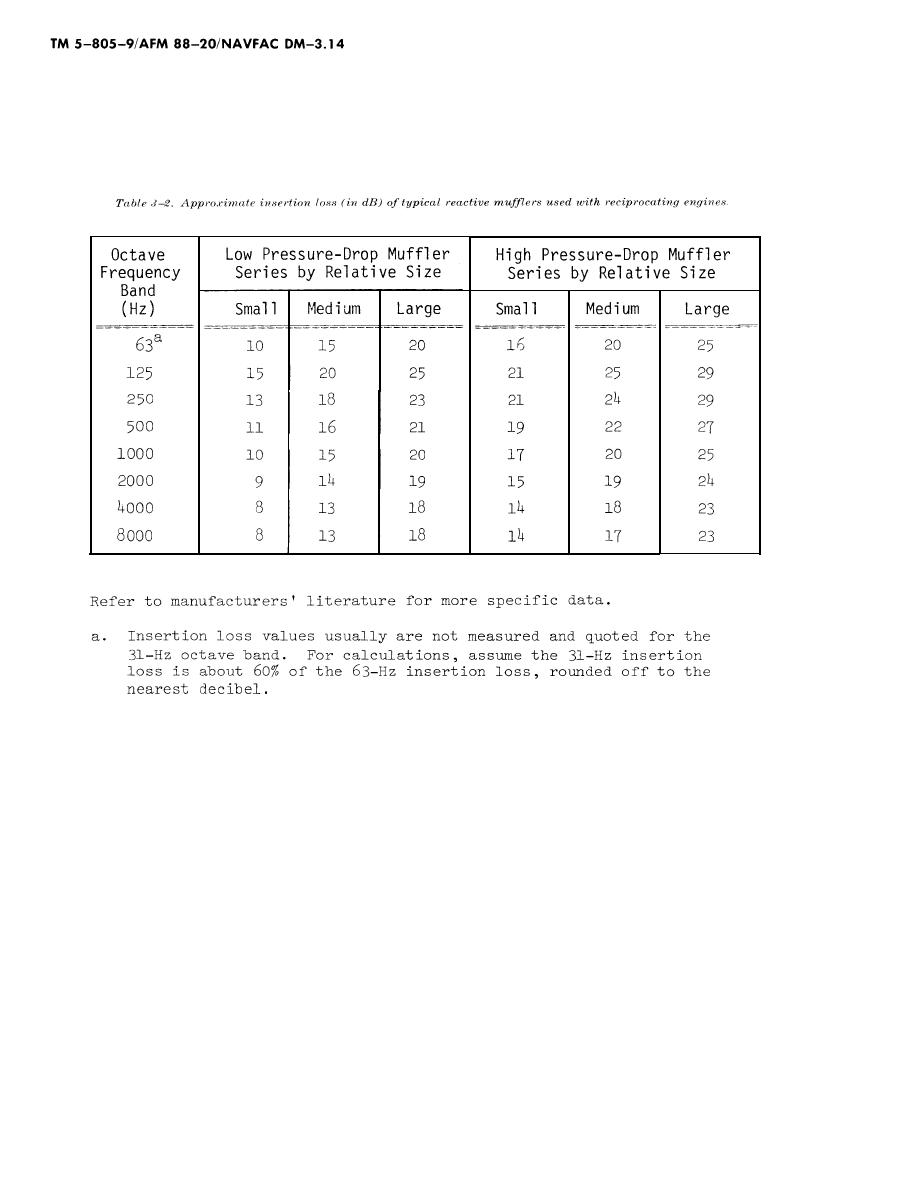
tempt to reflect sound energy back toward the
the larger the muffler, the greater the insertion
source. There is usually no acoustic absorption ma-
loss or noise reduction. Table 32 gives the approx-
imate insertion loss of the three classes of mufflers.
terial inside a reactive muffler. Most manufactur-
ers of these exhaust mufflers produce three grades
The PWL of the noise radiated by a muffled engine
or sizes, based on the amount of noise reduction
exhaust is the PWL of the unmuffled exhaust mi-
provided. Generally, for a particular engine use,
nus the insertion loss of the muffler.
b. Caution. The insertion loss values of table 3-2
a. Muffler grades and sizes. Typically, the three
are offered only as estimates because other factors
different grades of mufflers are labeled with names
in the installation may affect the noise output of
that indicate the relative degree of criticalness of
the engine--such factors as the exhaust pipe di-
the noise problem involved, such as ''commercial,"
mensions and layout, back-pressure in the system,
"residential" and "suburban," or "standard,"
and location of the muffler. The engine manufac-
"semicritical" and "critical," or similar series of
turer's approval or suggestions should be obtained
names and models. Very approximately, the over-
for unusual muffler arrangements.
all volume of the middle-size or second muffler in
the series is about 1.4 to 1.6 times the volume of
3-4. Dissipative mufflers.
the smallest or first muffler in the series, while the
volume of the largest or third muffler in the series
A gas turbine engine typically requires a muffler at
is about 2 to 2.5 times the volume of the first muf-
the air intake to the engine and another muffler at
fler. An engine manufacturer will usually recom-
the engine exhaust. Depending on the arrange-
mend a maximum length and minimum diameter
ment, either a reciprocating or a turbine engine
exhaust pipe for an engine, as these influence the
may also require some muffling for ventilation air
back-pressure applied to the engine exhaust. Low-
openings into the engine room, and some of the
pressure-drop mufflers are normally required for
packaged gas turbine units may require some
turbocharged engines because the turbocharger
muffling for auxiliary fans, heat exhangers or for
has already introduced some pressure drop in the
ventilation openings into the generator and/or gear
exhaust line.
compartment. The mufflers required for these situ-
3-4



 Previous Page
Previous Page
